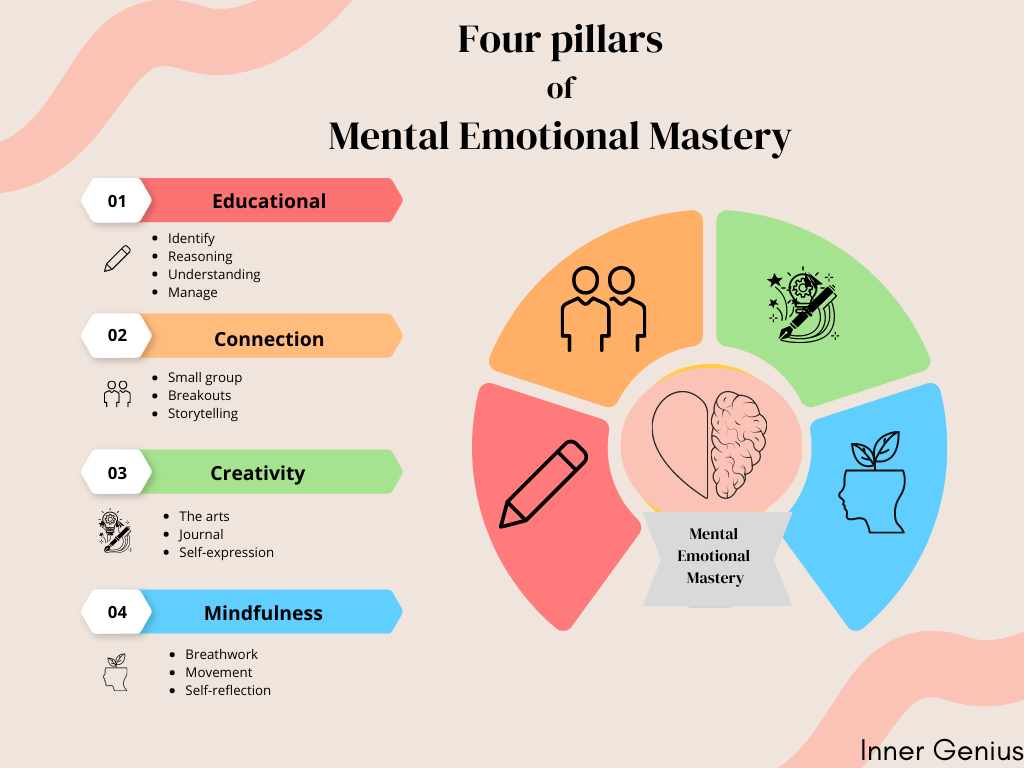
Why Children?
It's no secret internal and external violence are increasing. Our children are at risk more than ever to be subjected to discrimination, violence, racism, confusion and many others.
WHY THE CHANGE? And how can we help?
These are the questions we are committed to answering. Nycole and Shannon have a passion for addressing the root cause of increased violence and self-harm. Bridging the gap between the stigma of emotional illiteracy and healthy self-regulation by providing children a safe space to learn, self-express and share their emotional story.
We believe by going right to the heart of things with a program to teach children about their emotions, how to regulate themselves, and how to respond to others when they are dis-regulated, we can truly impact a generation that is screaming for help and direction.
We are creating grade specific workbooks to do just this!
‘Emotional Intelligence’ are buzz words making their way into our media and homes. But what does that even mean? Emotional intelligence by definition is the capacity to be aware of, control, and express one's emotions, and to handle interpersonal relationships judiciously and empathetically.
By giving the children the tools of awareness, regulation, empathy and decision-making, we will be able to give them a way to handle not only how THEY are feeling. But a skill set to understand and respond in a healthy way to others emotions.
These children deserve to feel and know they are safe. We are humbled and grateful for any support that feels comfortable for you. Please follow us on Facebook to watch how this community changing program unfolds.
Why incorporate Emotional and Mental wellness into educational institutions?
Education is the social institution through which society teaches its members the skills, knowledge, norms, and values they need to learn to become good, productive, and well-rounded members of their society. Educational institutions should include mental and emotional wellness in these skills-sets. In order to achieve and maintain their life goals and be productive citizens, they must understand and communicate what is happening within their minds and bodies. Emotional wellness will provide language, knowledge, and self-regulation practices about emotions, allowing individuals to share how and what they are experiencing and empathize with others.
Why donate?
Your support gives us the ability to continue to create age appropriate material for the pilot program which will be implemented in local schools.
Are you curious where you score on Emotional Intelligence? Click on the
link below:
https://www.ihhp.com/free-eq-quiz/
THE SCIENCE BEHIND THE WHY
As human beings experience the ups and downs of life, we often experience nervous system dysregulation throughout our days. Down-regulating our sympathetic nervous system response is key to transitioning from survival mode back to the safety mode of the parasympathetic.
Let’s break down these terms to understand further the science and different aspects of our Autonomic Nervous System (ANS). The traditional view of this system was two-part: The sympathetic nervous system, which activates our “fight or flight,” and the parasympathetic nervous system, which supports health, growth, and restoration (“rest and digest”). The Polyvagal Theory identifies a third part of the nervous system response called the social nervous system, a hybrid state of activation and calming that plays a role in our ability to engage (or not) socially.
According to the theory, it is possible to strengthen a nervous system that has not yet grown up or has been dysregulated by trauma. Most notably the Social Nervous System (also called the Ventral Vagal Complex, VVC) . It allows us to read the environment and respond to threats appropriately. This division responds to safety and is responsible for self-expression, orientation (turning our neck and head), listening, speaking, calling/asking for help, and communicating in general.
The vagus nerve travels from our brain to our gut, allowing us to be in touch with what’s happening inside our bodies. These “gut feelings” or “instincts” not only communicate with processing centers in the brain but also communicate with the heart (our emotions) and the motor branches of the face and throat to regulate self-expression. This is why our hearts ache when we are emotionally hurt, and our faces display how we feel. The gut is stimulated by external stimuli, which then relay to the brain for integration. This area of the brain is the critical area for empathy and is responsible for awareness of feelings and emotions from the body.
This is how we detect safety or a threat. Our ability to read faces is a survival function that allows us to differentiate between friends or foes. Since the VVC communicates via nerves of the face, throat, and heart, it is adaptive because it permits us to listen, signal for help, get more oxygen to the brain, and modulate heart rate. It also plays a role in our ability to feel empathy and happiness.
Another essential part of the proper development of the social nervous system is the ability to feel empathy, which gives us a sense of connection and belonging and is the basis of human bonds. An impaired social nervous system can appear as a misinterpretation of safety and threat. It also results in a weakened gut connection which damages the ability to tune into our inside feelings, sometimes inhibiting us from feeling pleasure or pain.
Our mission at Mental-Emotional Mastery (MEM) lies in engaging children in developing a healthy social nervous system and response through teaching, play, creativity, mindfulness, and regulation. They are often called Emotional Intelligence.
We are currently developing workbooks to educate children on Emotional Intelligence and Self-regulation. We will incorporate Connection, Creativity, and Mindfulness practices to enrich the learning experience.



